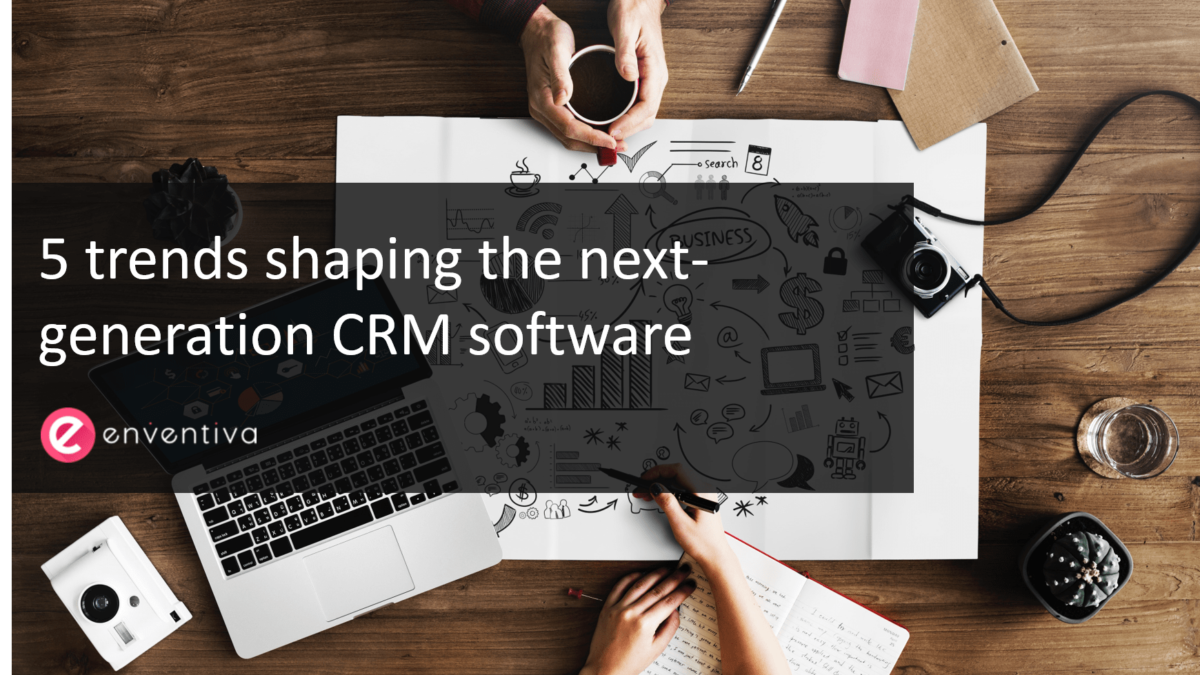5 trends shaping the next-generation CRM software
In the digital era, CRM software is more than ever a critical asset for a company. With the constant technological progress, today’s solutions are very different than a few years ago. The CRM scope is expanding: now, it embraces all the customer journey, from the marketing processes to the support. The core of a CRM solution is still the gathering of customer and prospect data, but the global value of leading CRM platforms now extends far beyond. Various trends are currently redesigning the CRM landscape: in this article, we have chosen to highlight five of them.
CRM systems become predictive with Artificial Intelligence and Machine Learning
Despite the rapid development of Artificial Intelligence (AI), many companies are still considering it as a complex technologie, hard to implement. However, in 2018, the leading CRM vendors have embedded AI and Machine Learning (ML) features into their solutions. Behind the hype, these technologies have a true value for the business users. With features like Salesforce Einstein, companies are able to harness their data like they never were before. The CRM system itself is now able to make prescriptions based on advanced analytics. Einstein uses ML to deliver advanced scoring and predictive analysis. For a company, this translates into measurable benefits, at all stages of the purchase funnel and after: in Marketing Cloud, embedded ML features, such as Einstein Engagement Scoring, help marketing teams chose the right targets, in order to improve the efficiency of marketing campaigns. Sales Cloud Einstein helps sales teams assess the chances of winning a deal, so they can focus their efforts on the most promising, and don’t miss opportunities. With Service Cloud Einstein, customers’ requests can be dispatched to the right person more efficiently.
True mobile-friendly CRM apps for connected employees
Every good customer relationship relies on the commitment of employees. The more a company helps its workers interact easily with the customers, the better. Today, employees have become digital workers, with different user habits and practices. They are mobile and connected, especially sales representatives, mobile workers by excellence. These employees want to access CRM applications whenever and wherever they need, without being limited in terms of features. CRM solutions must adapt to these new ways of working. This means that full-CRM capabilities must be accessible from mobile devices, such as smartphones or tablets. In this area, native cloud-based platforms have strategic advance.
A mobile-friendly interface, such as the one provided by Salesforce Lightning, is also a key requirement.
360 degrees view of the customer: from promise to reality
For a long time, the 360° view of the customer was a promise hard to achieve, especially in Business to Consumers markets, where the multiplicity of channels made difficult the centralization of customer’s data. This is changing. Leading vendors such as Salesforce have entirely rebuilt their platform around the customer: Salesforce Customer 360 put together the data from Commerce Cloud, Marketing Cloud and Service Cloud.
However, the CRM system is not the only one to store customer data. In order to get a really accurate view of the customer, integration with third-party solutions is required. For CRM vendors, this means providing robust and easy-to-use multidirectional APIs.
Combining advanced integration and customer-centric architecture, like Salesforce does, is the most appropriate way to provide a true cross-channel unified experience.
Reinventing customer experience with new interaction channels
During the purchasing process, a customer has many occasions to interact with a company, both direct and indirect. Special attention must be paid to these interactions, as they are the first determinant for the quality of the whole customer experience. Many efforts have been made in this area, but there is still place for improvement. Well-used, conversational technologies such as chatbots allow new types of interactions between a customer and a brand, quicker and more intuitive. Bots are now everywhere, but they need a strong CRM backbone to deliver real value: the most data they have access to, the better they can be trained.
The support also plays a key role in the customer journey. Yet, it is too often forgotten, even if it’s a powerful way to improve customer satisfaction. With a solution like Salesforce Service Cloud, powered by the Customer 360 architecture, a company can easily implement new forms of interactions with existing customers. Through next-generation service portals, they can leverage all the expertise of employees and partners, and use it to improve the services delivered to the customers. For the customer, this means quicker answers and increased quality of service. For the vendors, higher customer loyalty and lower churn-rate.
Scalability & empowerment with next level automation
Marketing departments are more and more challenged: they must prove the return on Investment (ROI) of their campaigns. With fully manual processes, this is very hard. With robust and automated marketing processes though, it becomes easy, because automated tasks are fully measurable. Salesforce Pardot addresses this need. It provides powerful marketing automation features, that are designed to increase the efficiency of marketing campaigns.
At a more global level, all the employees involved in customer-facing processes may benefit of automation: removing time-consuming steps accelerates every process. For the customer, this improves response time. Salesforce Process Builder allows everyone to build advanced workflows in a simple and intuitive way. Automated processes deliver faster results and increase the quality of service, both for customers and employees.






